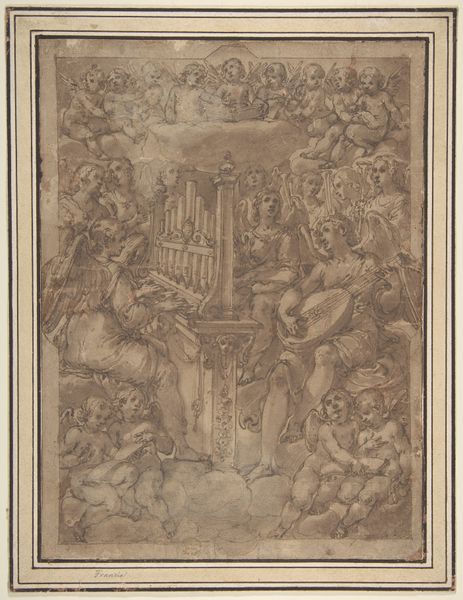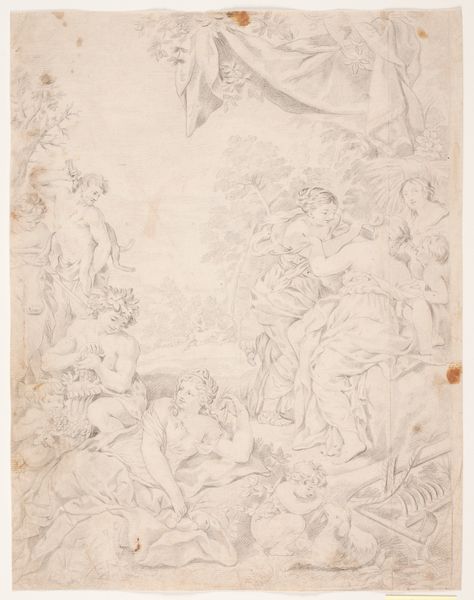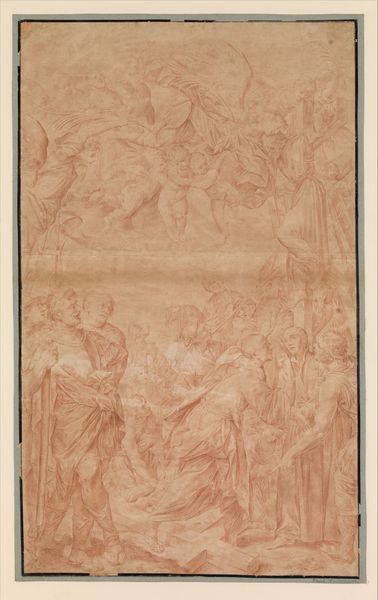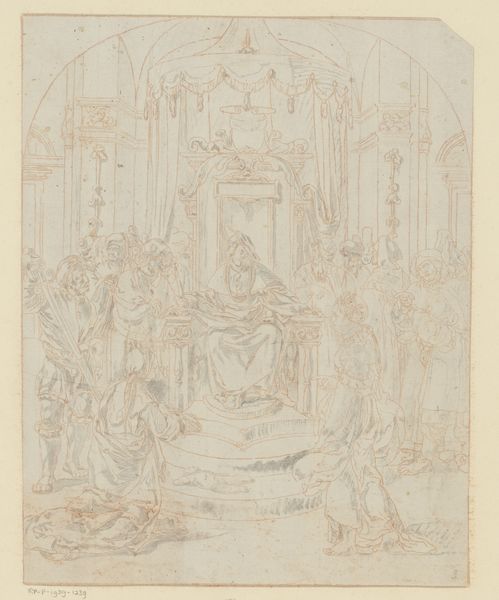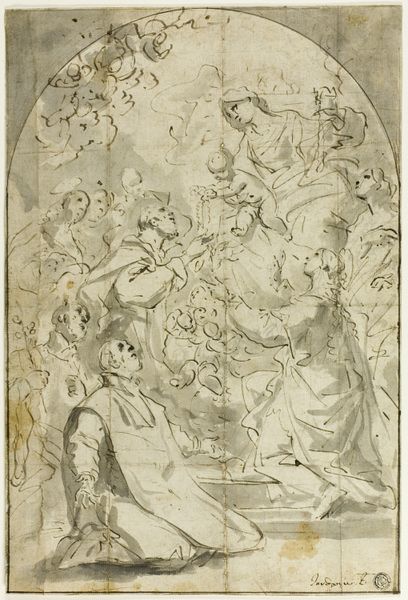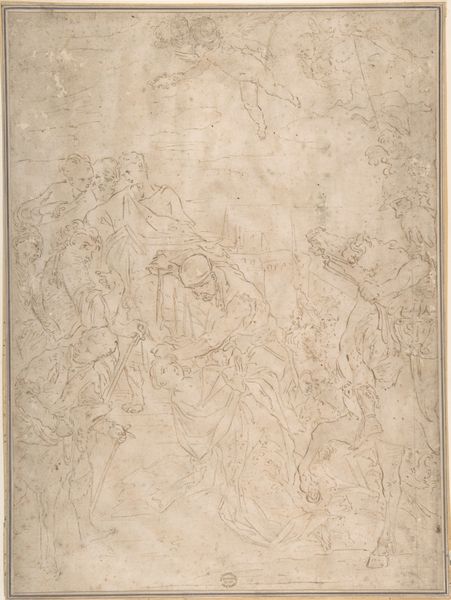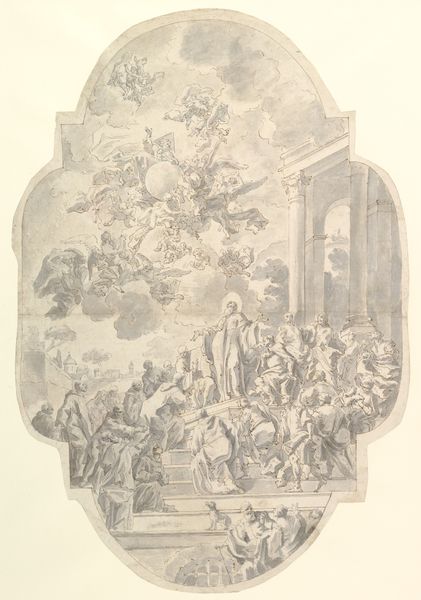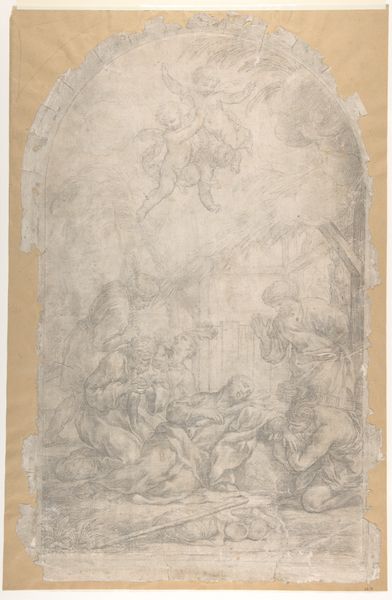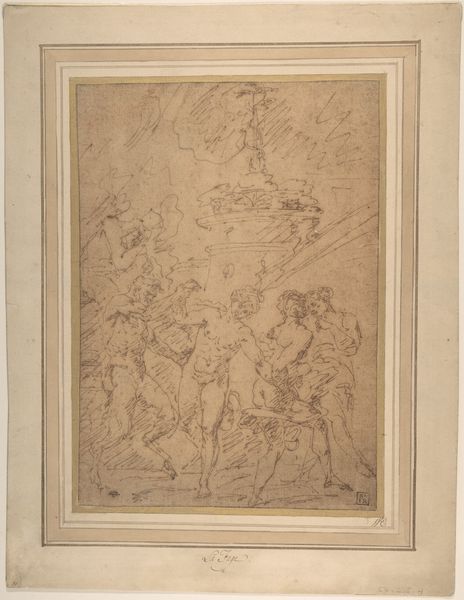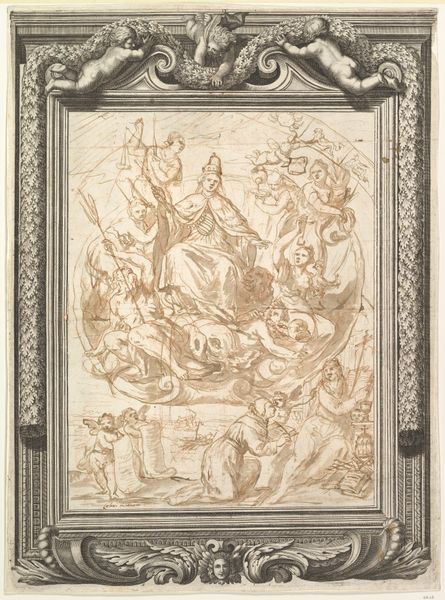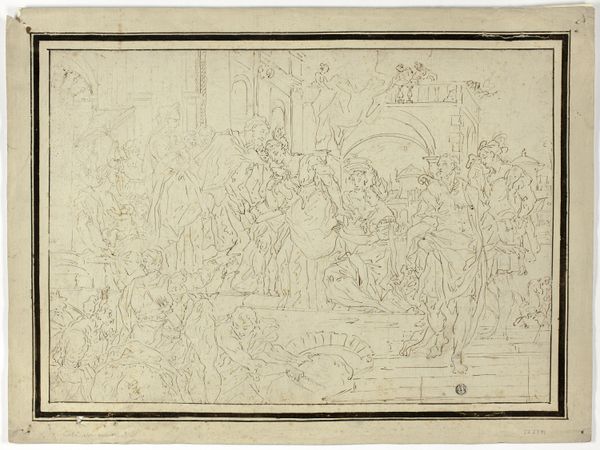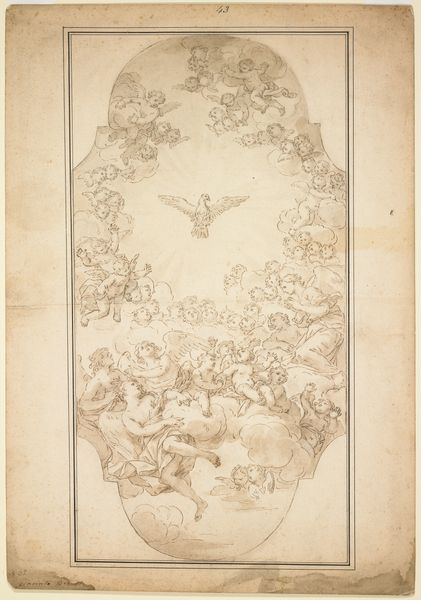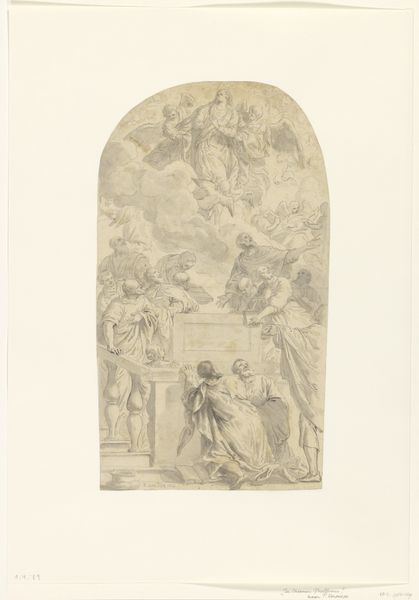
The Adoration of the Holy Trinity in the Old Covenant 1601
0:00
0:00
drawing, print, ink, pencil
#
drawing
#
ink painting
# print
#
pencil sketch
#
charcoal drawing
#
figuration
#
11_renaissance
#
ink
#
pencil
#
history-painting
#
watercolor
Dimensions: Sheet: 18 1/4 × 12 3/16 in. (46.4 × 31 cm)
Copyright: Public Domain
Editor: Here we have Karl Sandtner’s "The Adoration of the Holy Trinity in the Old Covenant," made around 1601, using ink and pencil. It's a whirlwind of figures, quite ethereal, but there’s something very deliberate about the composition. What stands out to you in this piece? Curator: Well, the drawing itself functions as a commodity, and its production would have been tied to specific economic and social conditions. It’s fascinating to consider the materials available to Sandtner, the labor involved in creating such a detailed piece. Think about where he sourced the ink and pencil, who prepared the paper. Editor: So, it's not just about the religious symbolism but the physical creation. Curator: Precisely. And how that process reflects broader societal structures. Is it a preparatory sketch for something larger, like a painting or tapestry? What was the function of drawing in the 17th century and what implications are involved for something seemingly made so quickly, like a sketch? The scale of this makes me believe it’s not quite as 'quick' as most sketches. Also, note the figures. Their depiction, is a representation of a societal standard for representing devotion. What are they offering here, really? Editor: It's interesting to think about how the act of making art itself is embedded in a network of materials, labor, and even belief systems. Curator: Exactly. We’re conditioned to see art as divorced from everyday life, from the economic realities that underpin its creation. It can challenge the boundaries between "high art" and craft, which helps re-orient understandings about consumption and labor. The art itself isn't the focal point anymore. Editor: I hadn't considered the economic and material conditions behind the drawing, but it adds a whole new dimension to it. Thank you for highlighting those details! Curator: My pleasure. It’s essential to understand art not just as an aesthetic object but as a product of its time, embedded in specific material conditions.
Comments
No comments
Be the first to comment and join the conversation on the ultimate creative platform.
